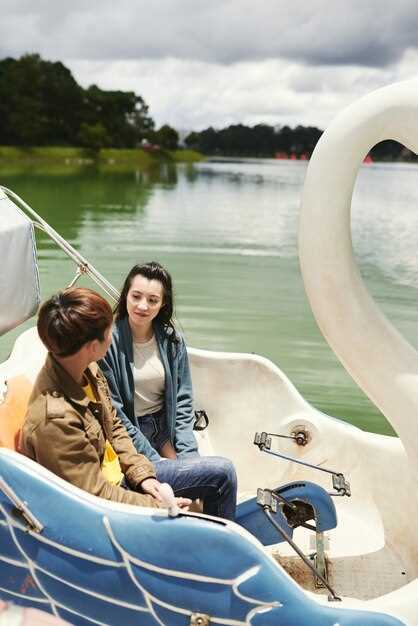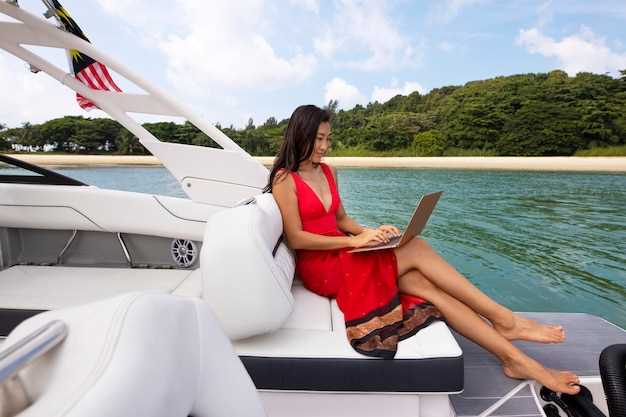
As the world becomes increasingly aware of environmental challenges, the travel industry is undergoing a transformation towards greener practices. Cruising, often seen as a luxury escape, has begun to embrace eco-friendly methodologies to ensure that the beauty of our oceans and the environments surrounding them are preserved for future generations. This shift toward sustainability is both a necessity and a responsibility for travelers and cruise operators alike.
Incorporating environmental consciousness into cruising adventures is crucial. From utilizing renewable energy sources on ships to adopting waste reduction initiatives, every small change contributes to a larger impact. Cruise lines are now investing in advanced technologies that minimize emissions and ensure that coastal communities can continue to thrive without suffering from over-tourism and its associated impacts.
Emphasizing green practices not only benefits the planet but also enriches the travel experience. Passengers can engage in eco-tourism activities, such as wildlife conservation excursions or beach cleanup efforts, allowing them to connect with nature in a meaningful way. By choosing eco-friendly cruises, travelers support a sustainable model that prioritizes environmental health and community well-being, proving that adventure and responsibility can go hand in hand.
Choosing Sustainable Materials for Boat Construction

In the realm of boating, selecting sustainable materials for boat construction is crucial for minimizing environmental impact. Traditional materials like fiberglass and aluminum, while popular, often contribute significantly to pollution and resource depletion. By opting for eco-friendly alternatives, manufacturers can enhance the sustainability of their vessels.
Wood stands out as a classic choice for environmentally conscious boat builders. Sourced from responsibly managed forests, it provides a renewable resource that can reduce a boat’s carbon footprint. Additionally, modern treatments allow wooden boats to withstand the rigors of marine environments without relying on harmful chemicals.
Another material gaining traction is composite structures made from bio-based resins and natural fibers such as hemp or flax. These composites not only offer comparable strength and durability to traditional materials but also boast lower lifecycle emissions. They are an excellent option for builders looking to innovate while remaining aligned with sustainable practices.
Recycled materials also play a vital role in sustainable boat construction. Utilizing reclaimed metals or plastics can significantly reduce waste while promoting a circular economy. This practice not only conserves resources but also encourages a mindset shift towards responsible consumption in the boating community.
Lastly, incorporating energy-efficient manufacturing processes into the production of boats can further enhance sustainability. Techniques such as 3D printing, which minimizes material waste, or adopting solar energy in production facilities, exemplify how the boating industry can contribute positively to the environment.
Ultimately, choosing sustainable materials for boat construction is an essential step in promoting eco-friendly boating adventures. By prioritizing these practices, we can ensure that future generations enjoy pristine waters and thriving ecosystems.
Implementing Waste Management Strategies on Board
Effective waste management is crucial for maintaining a sustainable environment while enjoying boating adventures. Implementing strategic waste management practices on board not only reduces environmental impact but also promotes green cruising initiatives.
First, it’s essential to categorize waste into recyclable and non-recyclable materials. Onboard recycling bins should be clearly labeled to ensure that crew and passengers can easily sort items such as plastics, metals, and glass. This practice significantly minimizes the amount of waste that ends up in landfills.
Second, educating the crew and passengers about the importance of waste reduction and proper disposal methods is vital. Informational sessions can be conducted before departure, highlighting how everyone can contribute to sustainable practices. This includes encouraging the use of reusable containers and utensils, which reduces single-use plastics that contribute to marine pollution.
Third, establishing a waste collection schedule can enhance the efficiency of waste management onboard. Designating specific times for waste disposal at port facilities ensures that waste is not accumulating unnecessarily during the cruise. Partnering with eco-friendly marinas that support green initiatives will also ensure responsible waste disposal.
Additionally, implementing composting practices for organic waste is beneficial. By creating a designated compost bin for food scraps, the boat can minimize waste while also promoting soil health when compost is utilized ashore. This practice transforms waste into a resource rather than a burden.
Finally, utilizing eco-friendly products that reduce harmful waste can be an effective strategy. This includes biodegradable soaps, detergents, and cleaning supplies. Opting for these alternatives ensures that cleaning methods are not contributing to water pollution during boating activities.
By prioritizing waste management strategies, boats can significantly lessen their ecological footprint while enjoying the splendor of cruising. Every effort counts towards creating a greener future for ocean adventures.
Utilizing Renewable Energy Sources for Green Boating
In the pursuit of sustainable cruising adventures, harnessing renewable energy sources has become a pivotal aspect of green boating. By integrating these technologies, boaters can significantly reduce their environmental impact while enjoying the tranquility of nature.
The following renewable energy sources are widely utilized in modern boating practices:
- Solar Energy: Solar panels can be installed on the deck or roof of boats, converting sunlight into electricity. This energy can power onboard electronics such as lights, navigation systems, and other appliances.
- Wind Energy: Small wind turbines can supplement energy needs, particularly in areas with consistent wind patterns. This eco-friendly option harnesses natural gusts to generate power for a variety of uses.
- Hydropower: Utilizing the kinetic energy of moving water can provide renewable energy while underway. Hydro generators can be deployed to convert the energy from the water flow into usable power.
- Biofuels: Alternative marine fuels, such as biodiesel produced from renewable resources, can drastically reduce emissions compared to conventional fossil fuels, promoting a cleaner environment.
Incorporating these renewable energy solutions not only promotes green practices but also enhances the overall boating experience.
Advantages of Renewable Energy in Boating

- Reduced Carbon Footprint: Utilizing renewable energy sources significantly cuts down greenhouse gas emissions associated with traditional boating methods.
- Cost Efficiency: After the initial investment, renewable energy systems can lower operational costs by decreasing reliance on fuel and allowing for free power generation.
- Energy Independence: Boaters can become less reliant on fuel stations and grid power, enhancing the freedom to explore remote areas.
- Environmental Preservation: Reducing pollution helps to protect marine ecosystems, ensuring that future generations can enjoy pristine waters and wildlife.
By embracing renewable energy sources, boaters contribute to a sustainable future, ensuring that the beauty of our oceans and lakes remains intact for years to come. Every small step counts in making eco-friendly choices that positively impact the environment.



